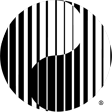The primary literature of tai chi is written in Chinese. Since exploring a language is a window into how a culture thinks, getting a little familiar with how Chinese is structured helps us understand the people who created tai chi and qigong.
Written Chinese is a language of images: think about that. Images engage a different part of our brains than words do. Written Chinese is more three dimensional than a phonetic language is; the visual language makes a gestalt between our left and right brains. Chinese is a subtly artistic language, polished and perfected over centuries.
For instance, there is an ancient Chinese poem about the moon. The author chose many characters that included the image of the moon. When you look at the poem on the written page, you can see the moon shining through the poem. There is no way to do that with English.
If you want to explore this language of images, here are some short video resources to watch for fun. At the end is a link to a book chapter you might appreciate.
A charming and animated look at Chinese characters: Chineasy Lesson 1 (10 mins)
https://www.youtube.com/watch?v=T5FNvW19GbA&feature=emb_logo
Intro to Chinese characters by a really cool artist (10 mins)
https://www.youtube.com/watch?v=s0h18Rdhb44&feature=emb_logo
Intro to Strokes (2 mins)
https://www.youtube.com/watch?v=IqBfz1viaog&feature=emb_logo
Basic structure of characters (4 mins)
https://www.youtube.com/watch?v=u1SP0SlBZYU&feature=emb_logo
Writing characters (11 mins)
https://www.youtube.com/watch?v=ATbFtCT_VGg&feature=emb_logo
Why use traditional characters (4 mins)
https://www.youtube.com/watch?v=FAFlQbE6euc&feature=emb_logo
Appreciating Chinese calligraphy (4 mins)
Master Chinese calligrapher demonstrates five major scripts (3 mins)
Here’s a fine and detailed discussion of the Chinese language: Chapter 1 of Who Can Ride the Dragon: An Exploration of the Cultural Roots of Traditional Chinese Medicine, by Zhang Yu Huan and Ken Rose. This chapter explores the language of Chinese medicine and discusses acupuncture points, qi and yin-yang. Please scroll down to Chapter 1 on page 5 to begin.
 Dịch
Dịch

Give a Reply